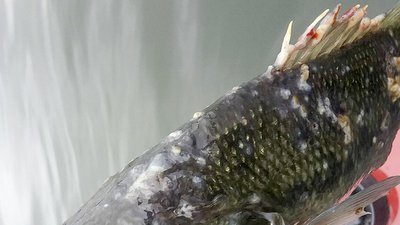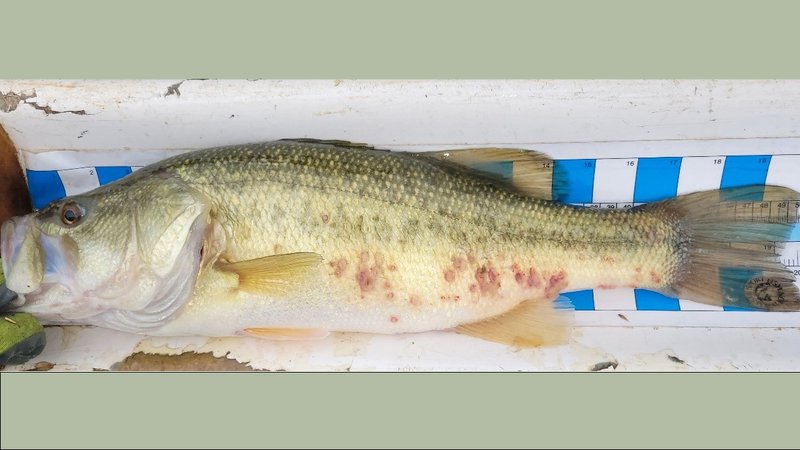According to Dylan Hann, Arkansas Game and Fish Commission fisheries supervisor for southwest Arkansas, some anglers have called with reports of red dots on the skin of some bass they’ve caught. He stresses that there’s no cause for alarm.

“We have seen some bass with these spots ourselves during routine sampling on Dierks Lake recently,” Hann said. “As we’ve mentioned in a recent post on the AGFC Black Bass Facebook Page, red dots don’t only appear on Rudolph’s nose this time of year. These are actually caused by a very common parasite called Epistylis.”
Hann says these parasites are commonly found on bass and bream when water is cooling. The organism Dr attaches to the fish, which causes the red spots of inflammation.
“The parasites are filter feeders, so they don’t actually feed on the fish,” Hann said. “The red inflammation spots are usually contained to the outer skin. Occasionally, the fish will get secondary fungal and bacterial infections and the spots will look fairly irritated; however, the fish’s immune system will catch up and fight it off.”
Another common call that comes from anglers enjoying the solitude of cold weather angling concerns bass and crappie with white, pimple-like bumps along their bodies. This disorder is called Saprolegniasis.
Kelly Winningham, AGFC fish pathologist in Hot Springs, says this disease will fuel more than a few calls during winter as well.
“It’s a fungal disease of fish and fish eggs called Saprolegniasis,” Winningham said. “Some members of this fungi family are primary pathogens, but most are secondary pathogens and cause disease when there are other illnesses, injuries or stress.”
These types of fungus, also known as water molds, can affect any freshwater fish species, and are present in nearly all freshwater environments, but are most prevalent when water temperatures are below 60 degrees.
“Saprolegnia in Arkansas typically occurs between October and March,” Winningham said. “This is generally when water temperatures are in the optimal growth range for the fungi. Water molds are everywhere in the environment, but when the water temperature cools and a fish gets stressed, it gives the fungi an opportunity to get through the fish’s natural defenses.”
In severe cases, individual fish may die from the infection, but Saprolegnia also poses no large-scale threat to fish in a wild setting.
Although unsightly, neither disorder poses a threat to people or pets. In small cases where only one or two spots occur on the fish, the area where Epistylis or water molds are present may be cut from filets without cause for alarm if the angler chooses. In extensive cases, the entire fish may need to be discarded.






